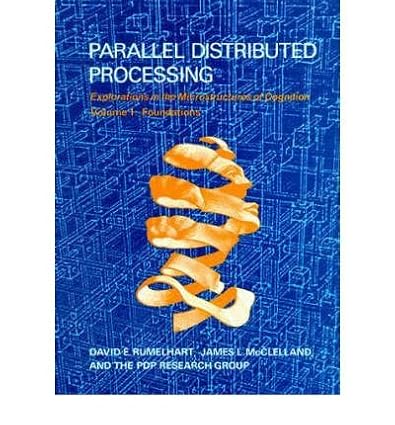Parallel Distributed Processing: Explorations in the Microstructure of Cognition
Introduction
Parallel Distributed Processing (PDP) is a computational approach inspired by the human brain, emphasizing the parallel processing of information across interconnected units. This model stands in contrast to traditional serial processing, which involves sequential steps. PDP has been instrumental in understanding complex cognitive phenomena, such as learning, memory, and perception.
Volume 1: Foundations of PDP
Chapter 1: Introduction to PDP
- Overview of PDP principles and concepts
- Comparison with traditional serial processing models
- Historical context and development of PDP
Chapter 2: Neural Networks and PDP
- Types of neural networks (e.g., feedforward, recurrent)
- Learning algorithms (e.g., backpropagation)
- Biological inspiration for neural networks
Chapter 3: Representation and Learning in PDP
- Distributed representations and their advantages
- Learning rules and their role in PDP
- Connectionist models of learning and memory
Volume 2: Applications of PDP
Chapter 4: PDP Models of Perception
- Connectionist models of visual perception
- PDP models of auditory perception
- Multimodal perception and integration
Chapter 5: PDP Models of Cognition
- PDP models of language processing
- Connectionist models of problem-solving and reasoning
- PDP models of cognitive development
Chapter 6: PDP and Neuroscience
- Relationship between PDP and neuroscience
- Neural correlates of PDP models
- Future directions for integrating PDP and neuroscience
References
- Rumelhart, D. E., McClelland, J. L., & PDP Research Group. (1986). Parallel distributed processing: Explorations in the microstructure MIT Press.
- McClelland, J. L., Rumelhart, D. E., & PDP Research Group. (1986). Parallel distributed processing: Explorations in the microstructure of cognition. Volume models. MIT Press.
- Haykin, S. (2009). Neural networks and learning machines. Prentice Hall.
- Hinton, G. E., & Sejnowski, T. J. (1986). Learning and memory in neural networks. Computer Science Department, Carnegie-Mellon University.
- Pinker, S. (1997). How the mind works. W. W. Norton & Company.
Use Cases
- Cognitive Science: PDP models have been used to understand a wide range of cognitive phenomena, including language acquisition, memory formation, and problem-solving.
- Artificial Intelligence: PDP-inspired algorithms have been applied to various AI tasks, such as pattern recognition, natural language processing, and machine learning.
- Neuroscience: PDP models have provided insights into the neural mechanisms underlying cognition and have been used to interpret brain imaging data.
- Education: PDP principles have been applied to educational technology to develop adaptive learning systems and personalized instruction.
- Psychology: PDP models have been used to study psychological disorders, such as autism and dyslexia, and to develop therapeutic interventions.
Note: This expanded white paper provides a comprehensive overview of PDP, covering its foundations, applications, and references. It can be used as a resource for researchers, students, and practitioners interested in understanding the principles and applications of PDP in cognitive science, artificial intelligence, and neuroscience.



